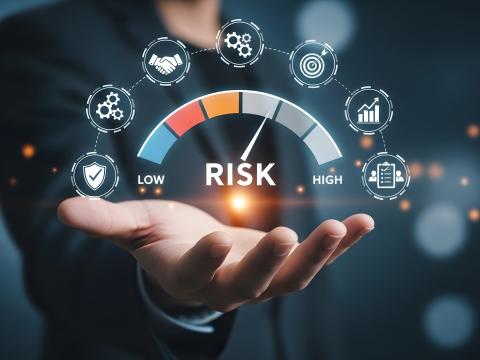President's Commentary: Moving the Ball Forward With Predictive Intelligence
Achieved largely through the tools of big data analytics and augmented by other types of intelligence, a predictive capability takes on many forms.
Athletes and coaches alike constantly study game film of opposing teams and players, identifying patterns and collecting intelligence that can provide insights into the opposition’s tendencies and overall game plan. This allows a team to formulate a strategy to exploit an opponent’s weaknesses.
Sports present an apt analogy for predictive intelligence. Achieved largely through the tools of big data analytics and augmented by other types of intelligence, a predictive capability takes on many forms. At its core, it assists in promoting timely and actionable information to identify trends or behaviors that enable the prediction of events. As a result, officials can act in a prompt and decisive manner.
Predictive intelligence is a capability that traverses and incorporates several different requirements. It may be used to more accurately forecast weather patterns so that disaster and emergency response teams can determine where to pre-position aid. It can boost understanding of market forces or other economic trends through the detailed accumulation and analysis of disparate economic and related data. This in turn can be used to predict trends in future economic growth or to determine how to allocate resources.
Predictive intelligence also can be used to analyze the manner in which forces are arrayed in the battlespace, and coupled with other sources of intelligence, it can help a commander determine adversarial activity and intent. Predictive capabilities can support strategic national security issues. For example, it may be determined that a country is investing heavily in a certain type of research or partnering with nations known to have capabilities in a particular area. Those observations may provide an understanding of future intent. Commanders also can use predictive intelligence to analyze their own actions and trends as they may be seen through the eyes of an adversary or a competitor.
If applied to communication networks and network security, predictive intelligence may identify anomalous behavior, both human and technical. When combined with other resources, it can provide a deeper understanding of network user behaviors. This may lead to identifying vulnerabilities introduced to the network or forecast the need for additional resources based on expanding user requirements. Predictive intelligence can help leaders across various sectors of government, industry and academia more effectively assess a given situation, predict or shape outcomes and assist in developing responses to a broad range of scenarios. From a cybersecurity, political, military, economic or homeland security perspective, it can be used as a tool for risk assessment and risk management.
Predictive intelligence can even help society cope with disruptive technologies and capabilities by identifying trends. Artificial intelligence, autonomous vehicles, robotics and social media offer great benefits, but they also present complex and confounding challenges we do not fully understand. Predictive capabilities can help generate insights and courses of action to adapt to these challenges.
Social media, for example, can be both constructive and disruptive. If one looks at Twitter, it can be used for constructively exchanging ideas and information and building relationships; it also can be used for disrupting social order. We’ve seen that in Benghazi and other places where flash mobs have wreaked havoc. Predictive analysis, especially when tied to other forms of intelligence, offers greater insights into group behavior when social media is used for nefarious purposes.
Ultimately, predictive analysis is about making better decisions. Going back to my sports analogy, a great quarterback was once asked why he watched so much film on opposing teams. He responded that as he dropped back to pass and watched the defensive alignment unfold in front of him, he could identify emerging patterns he had seen in the films. Consequently, he could determine where the defensive players were moving, and he could act accordingly.
That is precisely what predictive intelligence provides: a greater ability to leverage large amounts of disparate sets of information and integrate them into a cohesive picture that enables sound decisions for national security.




Comments